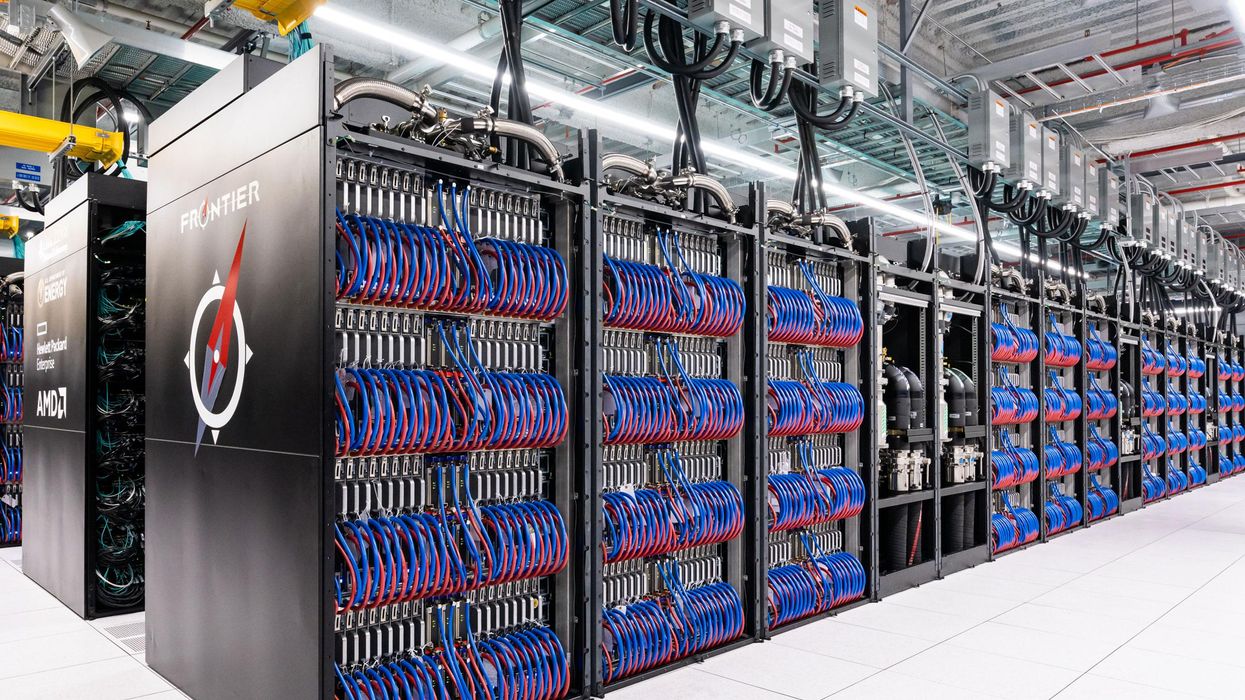
The latest list of the world’s most powerful supercomputers reveals that Frontier at Oak Ridge National Lab, in Tennessee, has stayed on top. The newly released «Top 500» list could in fact arguably be seen as a temporary object lesson in stasis—while still pointing toward future aspirants and aspiring countries who could one day challenge Frontier’s crown.
With a performance of 1.1 exaflops, or 1.1 quintillion floating point operations per second, Frontier was the first machine to break the exascale barrier, a threshold of a billion billion calculations per second. It is still the only exascale supercomputer announced to date, according to this week’s new Top500 list of the world’s fastest supercomputers.
Frontier, which is based on the latest HPE Cray EX235a architecture and boasts more than 8.7 million AMD cores, remains powerful enough to perform more than twice as well as the number two machine, Fugaku at the RIKEN Center for Computational Science in Japan. Fugaku had led the Top500 list for two years until Frontier ousted it in June. Running more than 7.6 million Fujitsu cores, Fugaku’s performance, at 442 petaflops, joins in Frontier in posting an unchanged compute speed since June’s Top500 list.
“Frontier is a first-of-a-kind supercomputer comprised of a hybrid architecture to run calculations at an unprecedented speed,” says Justin Whitt, program director for the U.S. Department of Energy’s Oak Ridge Leadership Computing Facility at Oak Ridge National Laboratory. “Our experienced team of technical staff and vendor partners worked tirelessly for Frontier to achieve the world’s first exascale performance on the LINPACK benchmark as reported in May 2022.” Whitt cited three projects that have used Frontier since its unveiling to earn finalist status for the Gordon Bell prize, to be awarded at the Supercomputing 2022 conference in Dallas this week.
At third place on the Top500 list is the LUMI system in Finland, which uses an HPE Cray EX235a architecture and harnesses some 2.2 million AMD cores. LUMI has doubled in power since June—with a performance of 309 petaflops—and remains the most powerful supercomputer in Europe.
Judging by the Top500 list alone, China’s fastest entry, Sunway Tiahulight would appear to trail far behind Frontier, clocking in at just 93 petaflops across its more than 10 million cores. (That’s just 8 percent of Frontier’s speed.) However, China’s HPC ambitions appear to be far from fully expressed on the otherwise gold-standard Top500 list.
Unentered as a Top500 contender (though still vying for the Gordon Bell prize) is China’s OceanLight system, which appears by all available measures to be at least an exaflop-aspiring machine—albeit one that remains inscrutable to international standards, typically measured by its placement on the Top500 list. In March, the tech website The Next Platform used a paper published by coauthors from institutions such as the Alibaba Group and Tsinghua University to conclude that OceanLight is at least theoretically capable of attaining peak speeds of 2.3 exaflops.
However, that is only an estimate and remains merely a tantalizing glimpse, at best, into supercomputing’s competitive exascale future. That is also a future that the U.S. Commerce Department is hoping to have a hand in curtailing. On Oct. 7, Commerce’s Bureau of Industry and Security promulgated an export control restriction that seeks to ratchet down all HPC chips sold to the People’s Republic. Nvidia, for one, has already released a chip for possible use in Chinese supercomputers that meets the U.S.’s scaled-back restrictions intended to quell China’s highest supercomputing and AI ambitions.
“Our actions will protect U.S. national security and foreign policy interests while also sending a clear message that U.S. technological leadership is about values as well as innovation,” said Assistant Secretary of Commerce for Export Administration Thea D. Rozman Kendler in a prepared statement at the time of the export control ban.
Meanwhile, back on the Top500 list, the only newcomer in the top 10 is Leonardo at the Italian supercomputing consortium CINECA. Leonardo is based on the Atos BullSequana XH2000 architecture and has more than 1.4 million Intel Xeon cores. With a performance of 174.6 petaflops, Leonardo is the fourth-fastest supercomputer in the world, knocking the bottom seven entries in the previous top 10 list down a peg.
Frontier was ranked first on the last Green500 list, which measures supercomputing energy efficiency. However, it now ranks second to Henri at the Flatiron Institute in New York. Whereas Frontier achieves 62.68 gigaflops per watt, Henri reaches about 65 gigaflops per watt. However, Henri is a far more modest machine, with only 5,920 Intel Xeon cores.
The world’s most powerful supercomputers continue to get faster. The entry point for the top 100 increased to about 10 petaflops, up from 5.39 petaflops six month ago. The last system on the newest Top500 list sat at position 460 six months ago.
Intel continues to provide the processors for the largest share of Top500 computers—75.8 percent of systems, down from 81.6 percent a year ago ago. In contrast, AMD is making gains, underlying 20.2 percent of the systems on the current list, up from 14.6 percent a year ago.
Source: IEEE Spectrum Computing
